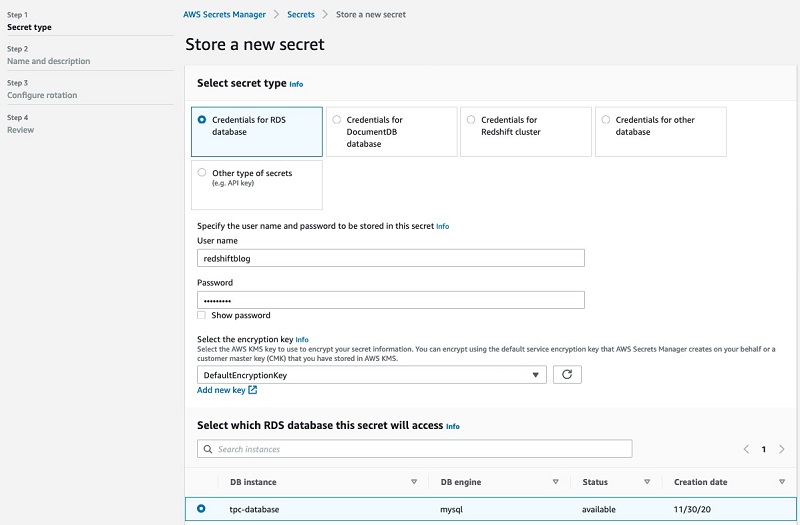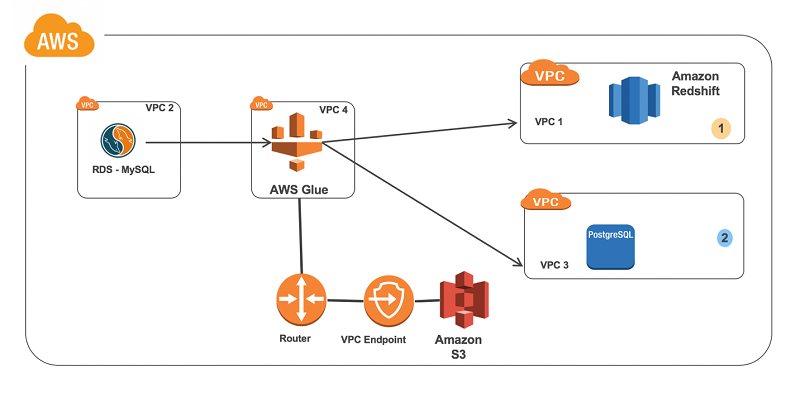AWS Big Data Blog
Category: Amazon RDS
Data preparation using an Amazon RDS for MySQL database with AWS Glue DataBrew
With AWS Glue DataBrew, data analysts and data scientists can easily access and visually explore any amount of data across their organization directly from their Amazon Simple Storage Service (Amazon S3) data lake, Amazon Redshift data warehouse, or Amazon Aurora and Amazon Relational Database Service (Amazon RDS) databases. You can choose from over 250 built-in […]
Query your Oracle database using Athena Federated Query and join with data in your Amazon S3 data lake
This post was last reviewed and updated July, 2022 with updates in Athena federation connector. If you use data lakes in Amazon Simple Storage Service (Amazon S3) and use Oracle as your transactional data store, you may need to join the data in your data lake with Oracle on Amazon Relational Database Service (Amazon RDS), Oracle running on Amazon […]
Building AWS Glue Spark ETL jobs by bringing your own JDBC drivers for Amazon RDS
AWS Glue is a fully managed extract, transform, and load (ETL) service that makes it easy to prepare and load your data for analytics. AWS Glue has native connectors to connect to supported data sources either on AWS or elsewhere using JDBC drivers. Additionally, AWS Glue now enables you to bring your own JDBC drivers […]
Sharing Amazon Redshift data securely across Amazon Redshift clusters for workload isolation
Amazon Redshift data sharing allows for a secure and easy way to share live data for read purposes across Amazon Redshift clusters. Amazon Redshift is a fast, fully managed cloud data warehouse that makes it simple and cost-effective to analyze all your data using standard SQL and your existing business intelligence (BI) tools. It allows […]
Announcing Amazon Redshift federated querying to Amazon Aurora MySQL and Amazon RDS for MySQL
Since we launched Amazon Redshift as a cloud data warehouse service more than seven years ago, tens of thousands of customers have built analytics workloads using it. We’re always listening to your feedback and, in April 2020, we announced general availability for federated querying to Amazon Aurora PostgreSQL and Amazon Relational Database Service (Amazon RDS) […]
Accessing and visualizing external tables in an Apache Hive metastore with Amazon Athena and Amazon QuickSight
Many organizations have an Apache Hive metastore that stores the schemas for their data lake. You can use Amazon Athena due to its serverless nature; Athena makes it easy for anyone with SQL skills to quickly analyze large-scale datasets. You may also want to reliably query the rich datasets in the lake, with their schemas […]
How to delete user data in an AWS data lake
General Data Protection Regulation (GDPR) is an important aspect of today’s technology world, and processing data in compliance with GDPR is a necessity for those who implement solutions within the AWS public cloud. One article of GDPR is the “right to erasure” or “right to be forgotten” which may require you to implement a solution […]
Integrating AWS Lake Formation with Amazon RDS for SQL Server
This post shows how to ingest data from Amazon RDS into a data lake on Amazon S3 using Lake Formation blueprints and how to have column-level access controls for running SQL queries on the extracted data from Amazon Athena.
Connect to and run ETL jobs across multiple VPCs using a dedicated AWS Glue VPC
In this blog post, we’ll go through the steps needed to build an ETL pipeline that consumes from one source in one VPC and outputs it to another source in a different VPC. We’ll set up in multiple VPCs to reproduce a situation where your database instances are in multiple VPCs for isolation related to security, audit, or other purposes.
Migrate RDBMS or On-Premise data to EMR Hive, S3, and Amazon Redshift using EMR – Sqoop
This blog post shows how our customers can benefit by using the Apache Sqoop tool. This tool is designed to transfer and import data from a Relational Database Management System (RDBMS) into AWS – EMR Hadoop Distributed File System (HDFS), transform the data in Hadoop, and then export the data into a Data Warehouse (e.g. in Hive or Amazon Redshift).









